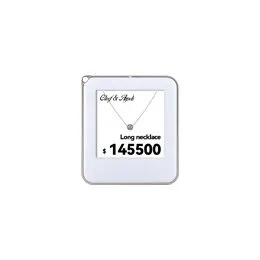The future of pricing in the retail landscape is undergoing a transformative shift, propelled by the widespread adoption of Electronic Shelf Labels ESLs. These digital price tags are revolutionizing the way retailers manage and display pricing information, ushering in a new era of efficiency, accuracy, and dynamic pricing strategies. ESLs replace traditional paper labels with electronic displays that can be remotely controlled, allowing retailers to update prices in real-time across all their stores. This not only streamlines the pricing process but also enables retailers to respond swiftly to market changes, promotions, or competitor pricing. One of the key advantages of ESLs is their ability to enhance pricing accuracy. Traditional pricing methods involve manual efforts to update paper tags, which are prone to errors and can lead to inconsistencies across stores. ESLs eliminate these issues by automating the price update process, reducing the risk of discrepancies and ensuring that customers are presented with accurate pricing information.
 This not only improves customer trust but also minimizes the chances of pricing-related disputes, creating a more seamless shopping experience. Moreover, ESLs empower retailers with dynamic pricing capabilities. Retailers can easily implement dynamic pricing strategies, adjusting prices based on factors such as demand, inventory levels, or even the time of day. This flexibility enables retailers to optimize pricing for maximum profitability and respond quickly to changing market conditions. For example, during peak shopping hours, retailers can implement surge pricing to capitalize on increased demand, while they can offer discounts during off-peak hours to stimulate sales. The implementation of ESLs also opens the door to personalized pricing strategies. Retailers can leverage data analytics and customer insights to tailor pricing for individual shoppers. By analyzing purchasing patterns, loyalty program data, and other relevant information, retailers can offer personalized discounts or promotions to specific customers, enhancing customer loyalty and driving repeat business.
This not only improves customer trust but also minimizes the chances of pricing-related disputes, creating a more seamless shopping experience. Moreover, ESLs empower retailers with dynamic pricing capabilities. Retailers can easily implement dynamic pricing strategies, adjusting prices based on factors such as demand, inventory levels, or even the time of day. This flexibility enables retailers to optimize pricing for maximum profitability and respond quickly to changing market conditions. For example, during peak shopping hours, retailers can implement surge pricing to capitalize on increased demand, while they can offer discounts during off-peak hours to stimulate sales. The implementation of ESLs also opens the door to personalized pricing strategies. Retailers can leverage data analytics and customer insights to tailor pricing for individual shoppers. By analyzing purchasing patterns, loyalty program data, and other relevant information, retailers can offer personalized discounts or promotions to specific customers, enhancing customer loyalty and driving repeat business.
Furthermore, ESLs contribute to sustainability efforts in the retail industry. The reduction of paper usage for traditional labels aligns with environmentally conscious practices, reflecting positively on a retailer’s corporate social responsibility. Additionally, the longevity of electronic shelf labels reduces waste, as they can be reused for an extended period compared to disposable paper labels. In conclusion, the future of pricing in retail is being reshaped by the widespread adoption of Electronic Shelf Labels. The integration of ESLs brings forth a myriad of benefits, including improved pricing accuracy, dynamic pricing capabilities, personalized strategies, and sustainability. As retailers continue to embrace these digital innovations, the shopping experience is poised to become more efficient, responsive, and tailored to the evolving demands of both consumers and the market. The era of ESLs represents a pivotal moment in retail dynamics, marking a shift towards a more agile and technologically advanced pricing landscape.
